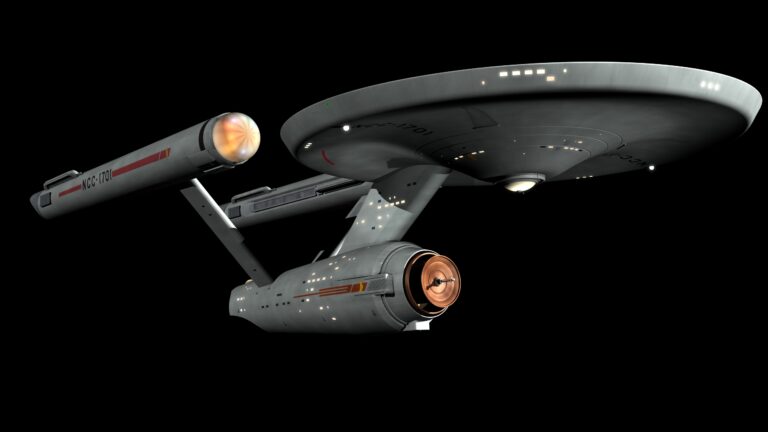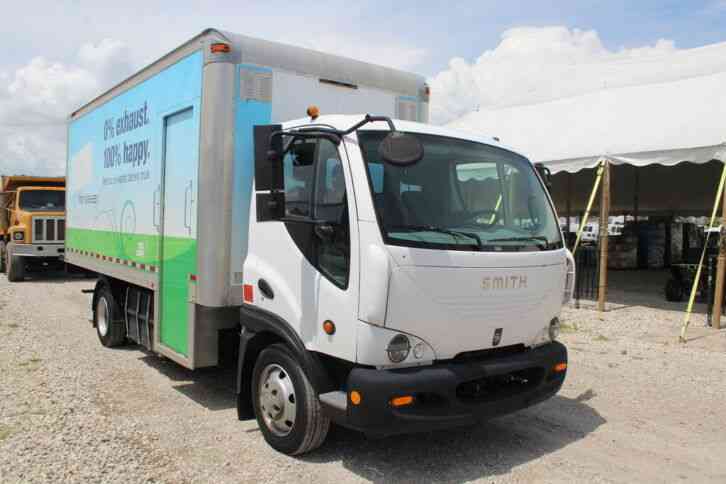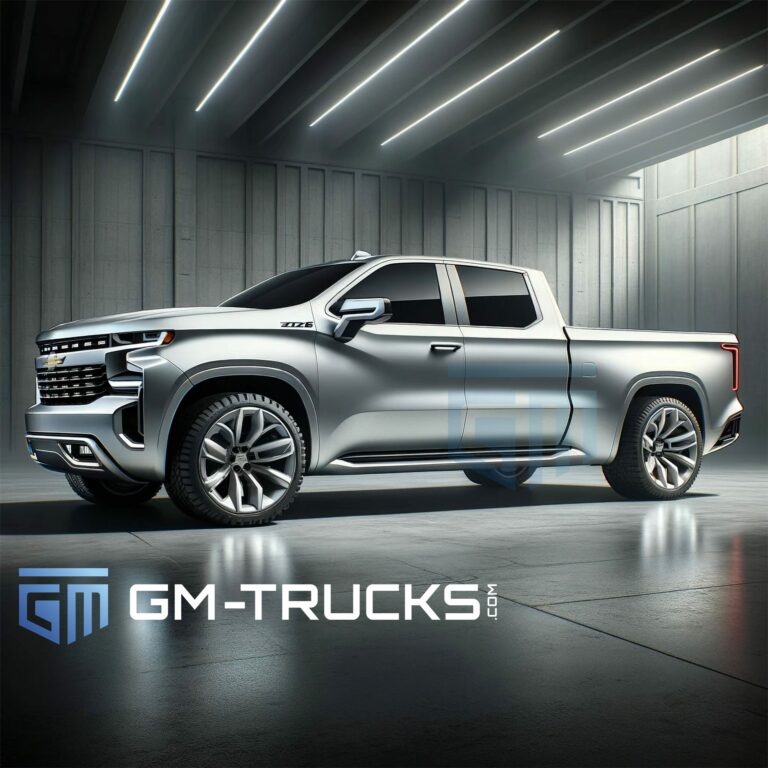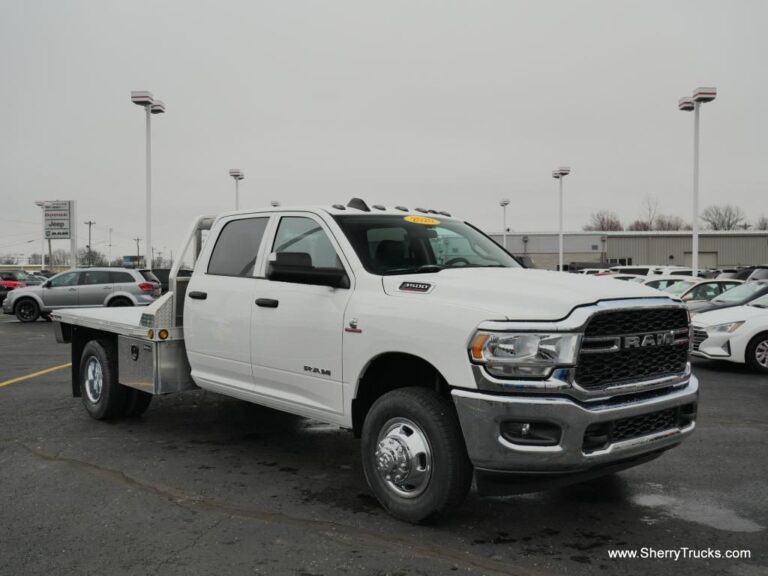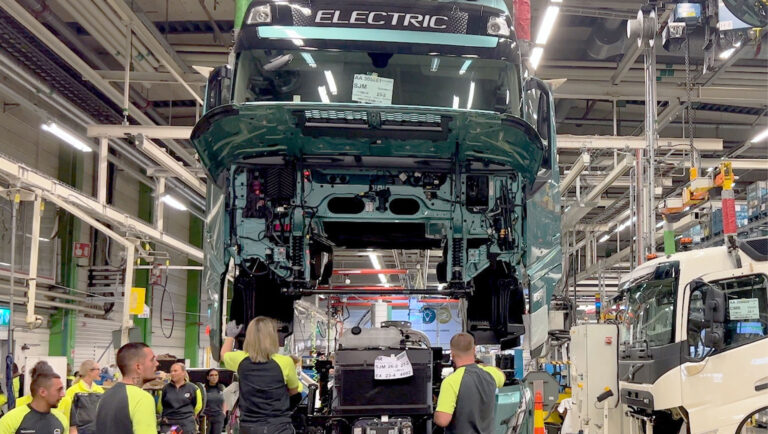Classic Ram Trucks For Sale: A Comprehensive Guide to Owning a Piece of American Muscle
Classic Ram Trucks For Sale: A Comprehensive Guide to Owning a Piece of American Muscle cars.truckstrend.com
The rumble of a robust V8, the unmistakable silhouette of a square-bodied workhorse, or the commanding presence of a second-generation "big rig" design – for many, these aren’t just trucks; they’re icons of American automotive history. Classic Ram trucks, whether bearing the Dodge or Ram badging, represent a unique blend of rugged utility, nostalgic charm, and enduring appeal. They are more than just vehicles; they are a testament to an era of straightforward engineering, powerful performance, and unmistakable character.
For enthusiasts, collectors, or even those simply seeking a reliable, character-filled daily driver, the market for classic Ram trucks offers a diverse and exciting landscape. This comprehensive guide will navigate the world of classic Ram trucks for sale, exploring their enduring appeal, what to look for, where to find them, and the considerations that come with owning a piece of automotive heritage.
Classic Ram Trucks For Sale: A Comprehensive Guide to Owning a Piece of American Muscle
Why Invest in a Classic Ram Truck?
The allure of a classic Ram truck extends far beyond mere transportation. It’s an investment in a lifestyle, a statement of individuality, and often, a surprisingly practical choice.
Nostalgia and Iconic Styling
From the utilitarian D-series of the 1960s and ’70s to the revolutionary "big rig" styling of the second-generation Ram in the 1990s, each era brought distinct design cues that have become iconic. Owning a classic Ram is like driving a piece of art, instantly recognizable and a conversation starter wherever it goes. The simpler lines, chrome accents, and often vibrant original paint schemes evoke a sense of nostalgia for a bygone era of automotive design.
Durability and Simplicity of Mechanics
One of the most compelling reasons to consider a classic Ram is their legendary durability. Built to be workhorses, these trucks often boast robust, easily serviceable mechanical components. Compared to modern vehicles laden with complex electronics, classic Rams are relatively straightforward, making them more approachable for DIY enthusiasts and less costly to maintain or repair by professional mechanics. Engines like the venerable Slant-Six, the LA-series V8s, and especially the Cummins turbo diesel, are renowned for their longevity and resilience.
Investment Potential
While not every classic Ram will appreciate dramatically in value, well-maintained, original, or professionally restored examples, particularly those with desirable configurations (like Cummins diesels or Power Wagons), have shown a steady increase in value over time. They offer a tangible asset that can be enjoyed while potentially appreciating, unlike many new vehicles that depreciate rapidly.

Utility and Versatility
Despite their age, many classic Ram trucks remain highly capable. Whether you need a truck for hauling, towing, light off-roading, or simply cruising, these vehicles are built for purpose. Their robust chassis and powerful engines make them surprisingly versatile, capable of handling modern demands with ease, especially if equipped with the right engine and drivetrain.
Community and Customization
Owning a classic Ram connects you to a vibrant community of enthusiasts. Online forums, local clubs, and social media groups provide a wealth of knowledge, support, and camaraderie. Furthermore, the simplicity of their design makes them popular platforms for customization, from subtle upgrades to full-blown restomods, allowing owners to personalize their trucks to their exact specifications.
Defining "Classic": Key Generations of Ram Trucks
What constitutes a "classic" Ram truck can be subjective, but generally, it refers to models that predate the modern era of complex electronics and advanced safety features, often spanning from the early 1960s up to the early 2000s.
The D-Series / Power Wagon Era (1960-1980)
Before the "Ram" name became synonymous with Dodge trucks, the D-series and Power Wagon lines dominated. These trucks are the epitome of rugged, no-frills utility. From the compact D100 to the heavy-duty D300, they were workhorses with a distinctive, often boxy, design. Early Power Wagons, with their legendary off-road capabilities, are highly sought after by collectors for their historical significance and incredible durability. Engines often included the famous Slant-Six and various iterations of the LA-series V8s.
First-Generation Ram (1981-1993)
In 1981, Dodge officially rebranded its truck line as "Ram." The first-generation Rams retained much of the D-series’ robust, square-bodied aesthetic but introduced new trim levels and more modern interiors. These trucks are celebrated for their simplicity and reliability. Late first-gen models (1989-1993) are particularly desirable as they introduced the legendary 5.9-liter Cummins turbo diesel engine, a game-changer for its incredible torque, fuel efficiency, and longevity, cementing the Ram’s reputation as a heavy-duty powerhouse.
Second-Generation Ram (1994-2002)
Perhaps the most iconic and influential "classic" Ram, the second-generation, launched in 1994, redefined truck design with its bold, "big rig" inspired styling. Its aggressive stance, prominent grille, and muscular fenders instantly set it apart from the competition. This generation offered a wide range of engines, including the robust 5.2L and 5.9L Magnum V8s, the monstrous 8.0L V10, and, of course, the highly coveted 12-valve (1994-1998) and 24-valve (1998.5-2002) 5.9L Cummins diesel engines. The second-gen Ram is a sweet spot for many buyers, offering classic appeal with enough modern amenities for comfortable daily driving.
Where to Find Your Classic Ram: Top Sourcing Channels
Finding the right classic Ram requires patience and knowing where to look.
- Online Marketplaces: Websites like eBay Motors, Craigslist, Facebook Marketplace, and dedicated classic car sites (e.g., Hemmings, ClassicCars.com) are excellent starting points. For higher-end or more unique examples, auction sites like Bring a Trailer or Mecum Auctions often feature pristine or rare models.
- Specialty Dealerships and Classic Car Auctions: There are dealerships that specialize in vintage trucks and classic cars. While prices may be higher, these vehicles are often thoroughly inspected, and some may come with warranties or restoration documentation.
- Local Classifieds and Word-of-Mouth: Don’t underestimate the power of local advertising (newspapers, community boards) or simply talking to people. Many hidden gems are found this way, often from owners who aren’t looking to maximize profit but want their truck to go to a good home.
- Ram/Dodge Forums and Enthusiast Clubs: Online forums and local clubs dedicated to Ram trucks are invaluable resources. Members often buy, sell, and trade vehicles, and you can tap into a network of experienced owners for advice and leads.
What to Look For: Essential Inspection Checklist
Before making a purchase, a thorough inspection is paramount. Even if you’re not mechanically inclined, knowing what to look for can save you significant headaches and money.
- Frame and Body Rust: This is often the biggest killer of classic trucks. Check the frame rails, cab corners, rocker panels, wheel wells, bed supports, and floorboards thoroughly. Surface rust is manageable, but extensive rot indicates a much larger, more costly repair.
- Engine and Drivetrain Health:
- Engine: Look for oil leaks, strange noises (knocks, ticks), smoke from the exhaust (blue for oil, white for coolant, black for rich fuel). Check fluid levels and condition.
- Transmission: Manual transmissions should shift smoothly without grinding. Automatic transmissions should shift crisply without slipping or harsh jerks. Test 4×4 engagement if applicable.
- Cummins Specifics: For diesel models, inquire about the "Killer Dowel Pin" (KDP) issue (12-valve), check for evidence of the "53 block" crack (24-valve), and inspect the injection pump for leaks.
- Suspension and Steering: Check for worn ball joints, tie rods, and bushings by jiggling the wheels. Look for sagging springs or worn shocks. Test the steering for excessive play.
- Brakes: Ensure the pedal feels firm and the truck stops straight without pulling. Check for leaks around brake lines and calipers.
- Electrical System: Test all lights, gauges, wipers, horn, radio, and HVAC system. Electrical gremlins can be notoriously difficult and expensive to diagnose.
- Interior Condition: Assess the seats, dash, headliner, and door panels. While cosmetic, extensive interior damage can be costly to restore.
- Documentation: Always ask for service records, previous ownership history, and a clear title. A VIN check can reveal accident history or salvage titles.
- Test Drive: This is non-negotiable. Listen for unusual noises, feel for vibrations, assess acceleration, braking, and steering. Pay attention to how the truck handles at various speeds.
Understanding Value: Factors Influencing Classic Ram Truck Prices
The price of a classic Ram truck can vary wildly, from a few thousand dollars for a rough project to tens of thousands for a meticulously restored or rare example. Several factors contribute to its market value:
- Rarity and Model: Certain configurations are more valuable. For example, original Power Wagons, short bed/regular cab models, or specific limited editions command higher prices.
- Condition: This is the most significant factor. A rust-free body and frame are paramount. Original, well-preserved trucks often fetch more than poorly restored ones. The scale goes from "parts truck" to "project," "driver," "restored," and "show quality."
- Mileage: Generally, lower mileage translates to higher value, assuming the truck has been properly maintained.
- Engine/Transmission: The Cummins diesel engine significantly increases a Ram’s value, especially the highly regarded 12-valve version. Manual transmissions can also add a premium for some enthusiasts.
- Options and Trim: Features like 4×4, air conditioning, specific trim levels (e.g., Laramie, Sport), and desirable paint colors can influence price.
- Geographic Location: Trucks from dry climates (e.g., Southwest) tend to be more valuable due to less rust.
- Market Demand: Trends in the classic vehicle market can affect prices. Currently, classic trucks are experiencing strong demand.
Classic Ram Trucks For Sale: Indicative Price Guide
The following table provides broad price ranges for classic Ram trucks. These figures are highly generalized and can fluctuate based on the specific factors mentioned above, as well as the seller’s motivation and the current market. Always consider a pre-purchase inspection by a qualified mechanic.
| Model/Generation (Example) | Year Range (Example) | Common Engine Options | Condition: Project/Rough Driver | Condition: Good Driver/Restored | Condition: Excellent/Show Quality | Key Factors Affecting Price |
|---|---|---|---|---|---|---|
| D-Series (D100/200/300) | 1960-1980 | Slant-6, LA V8s | $2,000 – $8,000 | $8,000 – $20,000 | $20,000 – $50,000+ | Rarity, original Power Wagon, rust-free body, engine originality, short bed |
| 1st Gen Ram (D/W Series) | 1981-1993 | Slant-6, LA V8s, Cummins (late) | $3,000 – $10,000 | $10,000 – $25,000 | $25,000 – $60,000+ | Cummins diesel premium (esp. 1989-1993), 4×4, rust, originality, manual transmission |
| 2nd Gen Ram (BR/BE Series) | 1994-2002 | V8s, V10, Cummins | $4,000 – $12,000 | $12,000 – $35,000 | $35,000 – $80,000+ | Cummins diesel premium (12v more than 24v), 4×4, low mileage, manual trans, rare colors/trims, V10 rarity |
| General Factors for ALL Models (Positive Impact on Price): | Rust-free body & frame, original components, excellent mechanical condition, low mileage, desirable options (A/C, 4×4), comprehensive service records, dry climate history. | |||||
| General Factors for ALL Models (Negative Impact on Price): | Extensive rust, major mechanical issues, non-original or poorly done modifications, salvage title, missing parts, poor documentation. |
Note: These prices are estimates and can vary significantly based on individual vehicle specifics, market demand, and geographical location. Always conduct thorough research and a pre-purchase inspection.
Restoration vs. Preservation: Your Classic Ram Journey
Once you acquire your classic Ram, you’ll face choices about its future.
- Preservation: This involves maintaining the truck in its original condition, focusing on mechanical reliability and preventing further deterioration. It celebrates the truck’s history and patina. This approach is often less costly and allows the truck’s character to shine through.
- Restoration: This aims to bring the truck back to "as new" or better-than-new condition. This can involve bodywork, a complete repaint, engine rebuilds, and interior overhauls. A full, professional restoration can be very expensive, potentially exceeding the truck’s market value, but it results in a show-quality vehicle.
- Restomod: A popular option, a restomod combines the classic aesthetics with modern performance, safety, and comfort features (e.g., modern engine swap, updated suspension, air conditioning, infotainment). This offers the best of both worlds but requires significant planning and investment.
- Daily Driver: Many classic Rams are perfectly capable of daily driving, especially the second-generation models. This often involves ensuring mechanical reliability, perhaps some comfort upgrades, but not necessarily a full cosmetic restoration.
Challenges and Solutions in Owning a Classic Ram
Owning a classic vehicle comes with its unique set of challenges, but most have practical solutions.
- Parts Availability: While many common wear-and-tear parts are readily available, some specific trim pieces, interior components, or unique mechanical parts for older models can be harder to source.
- Solution: Utilize online forums, specialized aftermarket suppliers, junkyards (for used parts), and reproduction parts manufacturers. Networking within the classic Ram community is invaluable.
- Fuel Economy: Older V8s, especially, are not known for their fuel efficiency.
- Solution: If fuel economy is a concern, consider a Cummins-powered truck. For gasoline engines, ensure the engine is properly tuned and maintained. Adjust expectations – these trucks prioritize power and durability over mpg.
- Safety Features: Classic Rams lack modern safety features like multiple airbags, advanced braking systems (ABS/traction control), and crumple zones.
- Solution: Drive defensively and be aware of the vehicle’s limitations. Some owners opt for modern seatbelt upgrades or brake system enhancements, but a full safety overhaul is often impractical.
- Maintenance: Classic vehicles often require more hands-on attention and regular maintenance than newer vehicles.
- Solution: Learn basic maintenance tasks, invest in a good service manual, and find a trusted mechanic who specializes in older vehicles. Proactive maintenance is key to reliability.
- Insurance: Standard auto insurance may not adequately cover the unique value of a classic truck.
- Solution: Seek out specialty classic car insurance providers. They understand the nuances of classic vehicle valuation and offer appropriate coverage, often at competitive rates for vehicles driven sparingly.
Frequently Asked Questions (FAQ)
Q: What defines a "classic" Ram truck?
A: Generally, "classic" refers to Ram trucks (or Dodge trucks before the Ram branding) that predate modern electronic systems and design, typically from the 1960s up to the early 2000s. The first-generation (1981-1993) and second-generation (1994-2002) Rams are most commonly sought after as classics.
Q: Are classic Ram trucks reliable for daily driving?
A: Many classic Ram trucks, especially the first and second generations with well-maintained engines (particularly the Cummins diesel), can be surprisingly reliable for daily driving. However, they require consistent maintenance and attention due to their age. Modern safety features and comfort amenities will be limited compared to new vehicles.
Q: How much does it cost to restore a classic Ram?
A: Restoration costs vary widely depending on the truck’s initial condition, the desired level of restoration (driver quality vs. show quality), and whether you do the work yourself or hire professionals. A full, professional, body-off restoration can easily cost $30,000 to $80,000+, potentially more for rare models.
Q: Where can I find parts for my classic Ram?
A: Parts can be found through various channels: online retailers specializing in classic truck parts, general auto parts stores (for common wear items), junkyards, classic car shows, and enthusiast forums/clubs where members often sell or trade parts.
Q: Are classic Ram trucks a good investment?
A: For desirable models in excellent condition (e.g., low-mileage Cummins trucks, original Power Wagons), classic Rams can be a good investment, with values appreciating over time. However, like any investment, there’s no guarantee, and condition is paramount. It’s often more about the enjoyment of ownership than pure financial return.
Q: What’s the best classic Ram for a first-time owner?
A: The second-generation Ram (1994-2002) is often recommended for first-time classic truck owners. It offers iconic styling, robust mechanicals, and enough modern comforts (like A/C, power windows) to be practical, while still being relatively easy to work on and having good parts availability.
Q: Do classic Ram trucks have good fuel economy?
A: Generally, no. Gasoline-powered classic Rams, particularly those with V8s, are not known for their fuel efficiency. Cummins diesel-powered Rams, especially the 12-valve models, offer significantly better fuel economy, but still won’t match modern, smaller-engine trucks.
Conclusion
Owning a classic Ram truck is more than just acquiring a vehicle; it’s embracing a piece of American history and joining a passionate community. Whether you’re drawn to the rugged simplicity of a D-series, the utilitarian charm of a first-generation, or the bold statement of a second-generation "big rig," these trucks offer a unique and rewarding ownership experience.
While the journey may involve unique challenges, the satisfaction of preserving, restoring, or simply driving a classic Ram is unparalleled. They stand as enduring symbols of power, durability, and a simpler time in automotive manufacturing. For those seeking character, capability, and a tangible connection to the past, the classic Ram truck for sale market offers an exciting opportunity to drive a legend.

